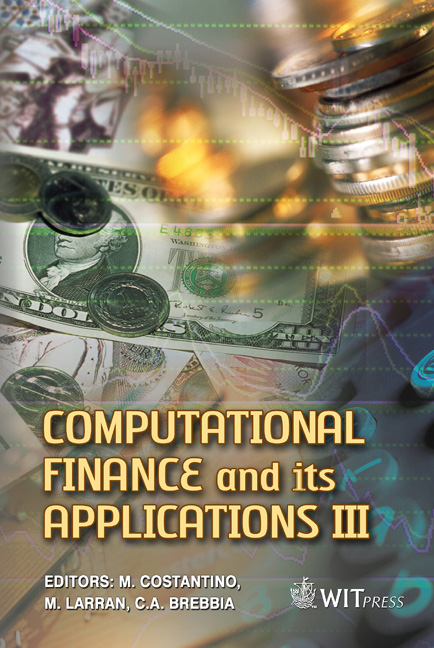Numerical Modelling Of Operational Risks For The Banking Industry
Price
Free (open access)
Volume
41
Pages
10
Page Range
207 - 216
Published
2008
Size
398 kb
Paper DOI
10.2495/CF080201
Copyright
WIT Press
Author(s)
R. Barreira, T. Pryer & Q. Tang
Abstract
In Basel II Capital Accord, the Advanced Measurement Approaches (AMA) is stated as one of the pillar stone methods for calculating corporate risk reserves. One of the common yet cumbersome methods is the one known as loss distribution approach. In this article, we present an easy to implement scheme through electronic means and discuss some of the mathematical problems we encountered in the process together with proposed solution methods and further thought on the issues. Keywords: loss distribution, bottom-up approach, operational risk, Monte-Carlo simulation. 1 Introduction In Basel II Capital Accord, the use of top-down or bottom-up method to calculate risk provisions are recommended as the ways to model and compute corporate risk value (VaR – values at risk). We mainly discuss the bottom-up approach. For this approach, there are process based models, actuarial models and proprietary models. The process based model splits banking activities into simple business steps, the management evaluates the situation according to these steps to identify risks. This is mainly a time series type of model. Regressional analysis tools are often used when there are multi-factors in the problem (cf. [1, 2, 5–7]). The actuarial models or statistics models are generally parametric statistical models. Various statistical fitting techniques are used (see extensive discussions in [3]). In this article, we present an efficient, direct way for this approach and we also discuss some of the technical difficulties that need to be solved.
Keywords
loss distribution, bottom-up approach, operational risk, Monte-Carlo simulation.





